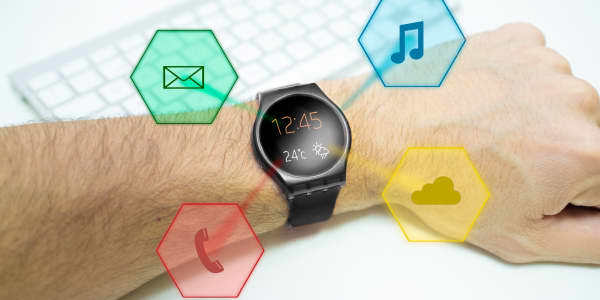Printing off a kidney or another human organ may sound like something out of a science fiction novel, but with the advancements in 3D printing technology, the idea may not be so far-fetched.
While 3D printing has been successfully used in the health care sector to make prosthetic limbs, custom hearing aids and dental fixtures, the technology is now being used to create more complex structures — particularly human tissue.
Organovo , a San Diego-based company that focuses on regenerative medicine, is one company using 3D printers, called bioprinters, to print functional human tissue for medical research and regenerative therapies.
"This is disruptive technology," said Mike Renard, Organovo's vice president of commercial operations. "It's always interesting and fun, but never easy." (More:15 Surprising Global Technology Cities)
Traditional 3D printing, also known as additive manufacturing, is a process of making three dimensional solid objects from a digital model. 3D printing is achieved using additive processes, in which an object is created by laying down successive layers of material such as plastic, ceramics, glass or metal to print an object. Companies including Boeing, General Electric and Honeywell use this type of 3D printing to manufacture parts.
Bioprinters, though, use a "bio-ink" made of living cell mixtures to form human tissue. Basically, the bio-ink is used to build a 3D structure of cells, layer by layer, to form tissue.
Eventually, medical researchers hope to be able to use the printed tissue to make organs for organ replacement.
However, growing functional organs is still at least 10 years away, said Shaochen Chen, a professor of nano-engineering at the University of California, San Diego, who uses bioprinting in researching regenerative medicine.
But even though developing functional organs may still be a decade off, medical researchers and others are using bioprinting technology to make advancements in other ways.
Researchers in regenerative medicine at Wake Forest University in North Carolina partnered with the Armed Forces Institute for Regenerative Medicine to make a 3-D skin printer that deposits cells directly on a wound to help it heal quicker. Researchers at the university have also had success printing off kidney cells.
Bioengineers at Cornell University have printed experimental knee cartilage, heart valves and bone implants. And the non-medical start-up Modern Meadow, which is backed by investor Peter Thiel, is using bioprinting technology to develop a way to print meat.
Bio-printing is also playing a part in how some pharmaceutical companies conduct medical research, and the technology may also have the potential to save the drug companies a lot of money because it could cut drug testing costs, Chen said.
Medical researchers in the pharmaceutical industry, until lately, have used two-dimensional cell cultures to test drugs during the early stages of development. However, the 2D cell cultures do not reflect human tissue as accurately as 3D printed tissue, meaning the 2D models can create misleading test results.
Testing with 3D tissues, however, provide more precise results, which allows for pharmaceutical companies to determine failed drugs early on before investing more money in development.
And with clinical trials accounting for the largest percentage of the biopharmaceutical industry's budget for the research and development at $31.3 billion, according to a report from the Presidents Council on Science and Technology, it's no surprise that drug companies want to use 3D tissues to help avoid wasted costs.
"It's very, very significant...It takes a lot of time and money developing a successful drug," Chen said. "I think this is a great idea and will save the pharmaceutical industry a lot of troubles ... It could help get drugs to market faster."
And this is where Organovo sees opportunity, Renard said. (More:Big Data Moves to the Food Industry)
Organovo, with the help of the Australian companyInvetech, was the first company to launch a commercial 3D bioprinter. The company originally intended to sell its printer, which is called the NovoGen MMX bio-printer, to other companies for use. But after seeing opportunity to cash in on the market for human tissue, the company changed its business model to making tissues for drug companies for medical research and therapeutic applications instead.
"Generally, the drug business can benefit significantly from these 3D tissues ... There's plenty of evidence that their processes are basically broken. They are inefficient and highly suspect," Renard said. "There's a big problem and they are looking for a better solution."
Organovo, which trades on the OTC market, wants to be that solution.
The company has partnered with Pfizer and United Therapeutics, and while Renard would not disclose the details of their partnership, he did say that the companies have a business arrangement in which funding is provided and some rights are shared.
Renard did not disclose any other drug companies that are partnering with Organovo.
But Organovo, which has made blood vessels, lung tissue and recreated tumors using bio-printing, is customizing tissue of all types for its current partners' medical research, Renard said.
"We build custom tissue for them," Renard said. "They may have specific cell lines, disease areas of interests and they want a proprietary model for them ... we can make it."





